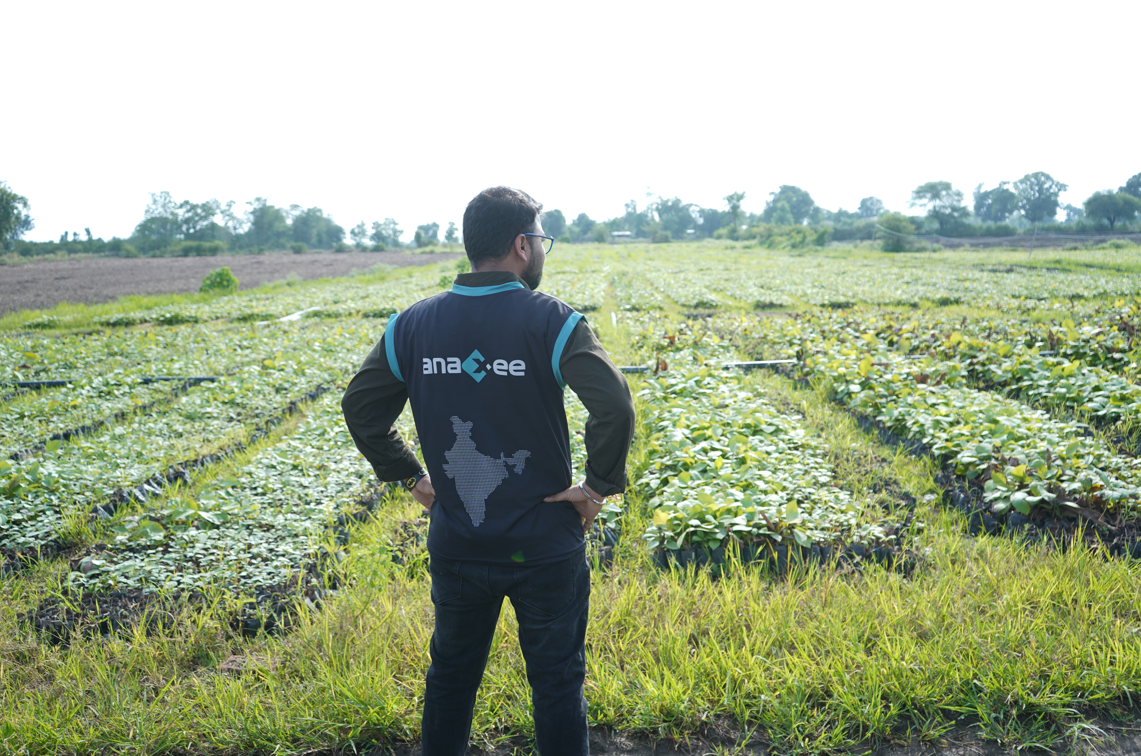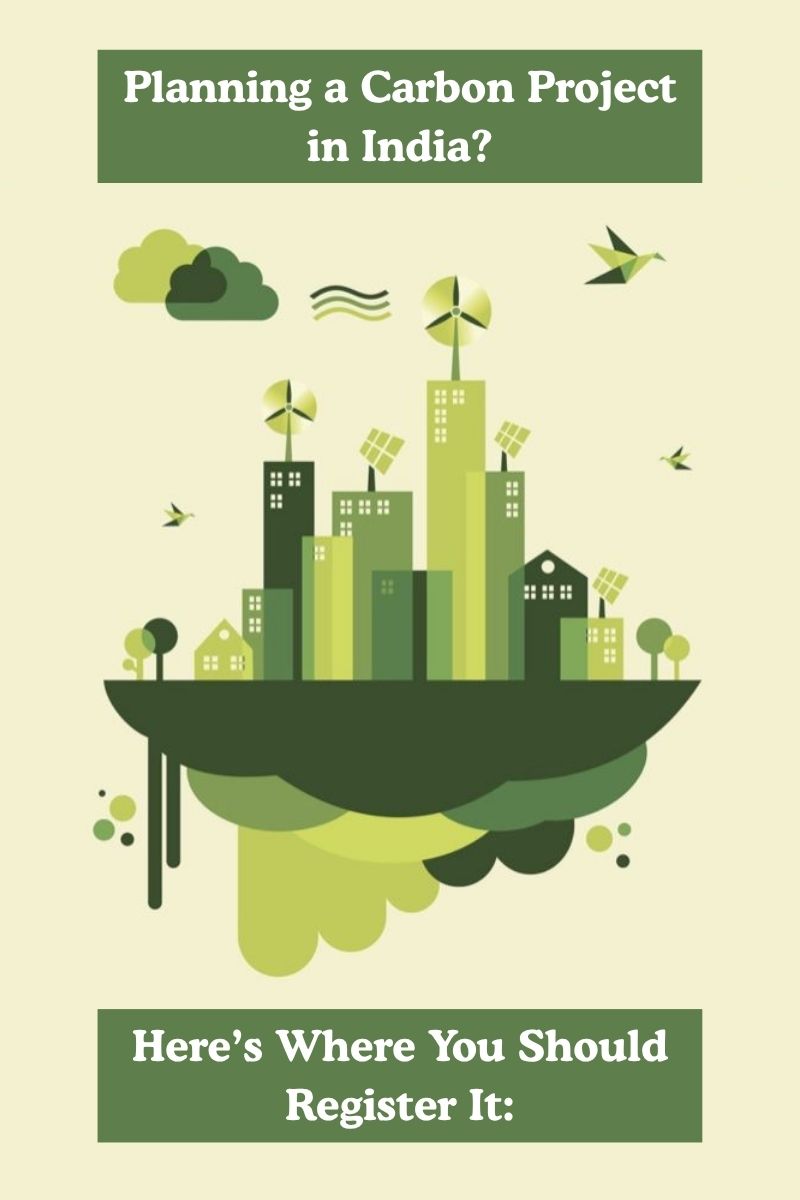BLOG
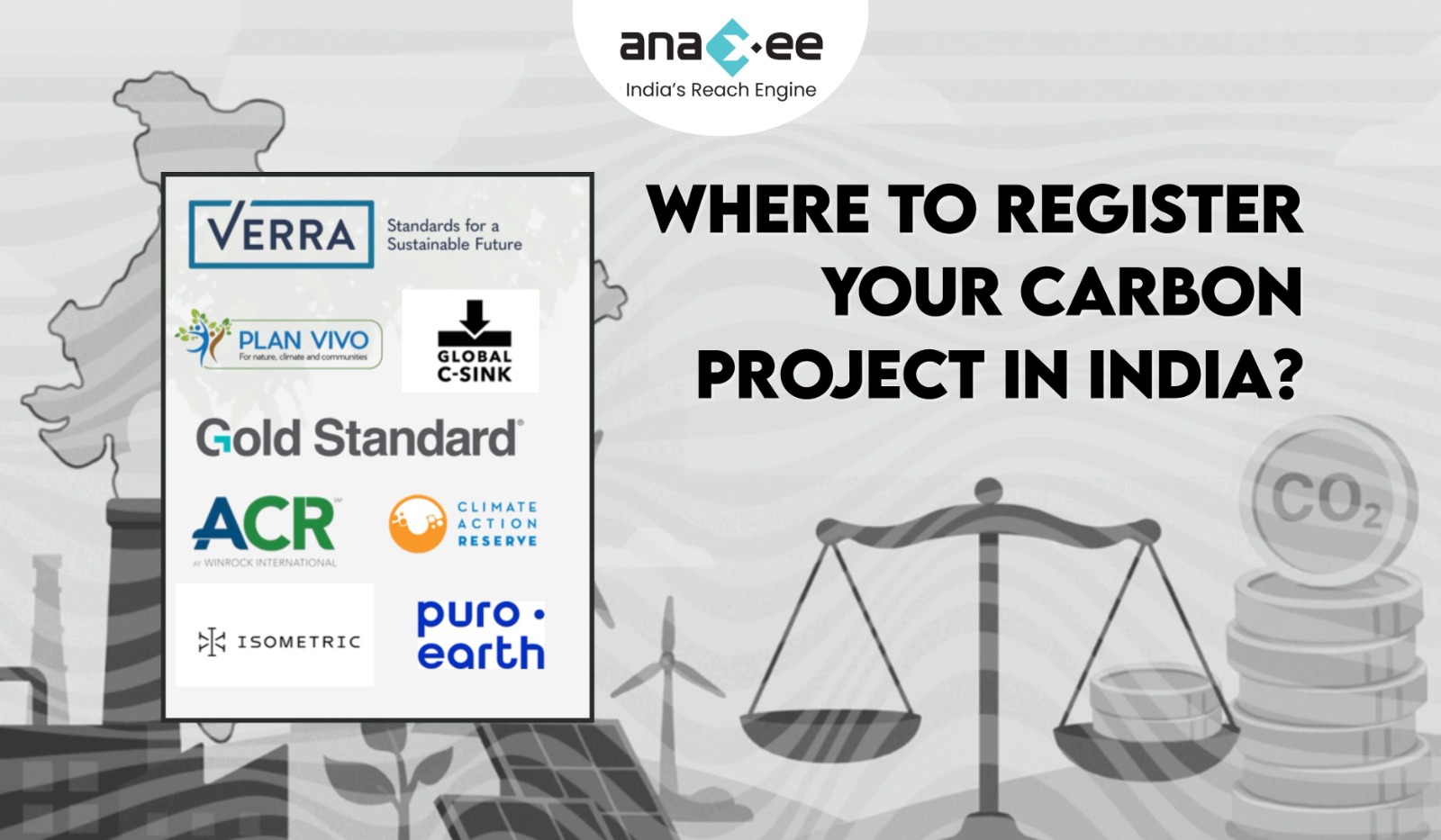
Where to Register Your Carbon Project in India: Verra, Gold Standard, CarbonSink, CCTS & Other Key Registries
India’s net-zero deadline of 2070 has triggered an unprecedented appetite for high-quality carbon credits. Whether you’re a project developer planting agroforestry bunds in Madhya Pradesh, an NGO rolling out improved cookstoves in Bihar or a corporate CSR team exploring biochar, choosing where to register your project is now a strategic decision that can make or break financing, credibility and long-term impact.
This article guide walks you through the leading carbon registries accepting Indian projects, compares their rules, costs and timelines, and flags the legal nuances you should address before filing. If you’re new to the carbon market, treat this as a practical roadmap- no jargon, just the facts (with sources).
Why Registration Matters:
– Credibility & Market Access – Buyers, especially multinational corporates under science-based targets, demand credits issued by recognized registries.
– Avoiding Double Counting – A registry tracks issuance and retirement, ensuring the same tonne of CO₂e isn’t sold twice.
– Methodology Integrity – Robust methodologies protect against headline-risk (e.g., mis-labelled REDD+ vs. soil projects).
– Price Premiums – Credits from well-known registries typically trade 10-40 % higher than those from unknown or purely local systems.
Meet the Major Registries Accepting Indian Projects:
1. Verra:
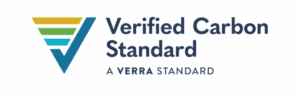
Verra’s VCS is the largest voluntary registry globally, covering >1 900 projects and ~1 billion credits issued.
Key points:
– Project Types: Afforestation/Agroforestry, IFM, Soil Carbon, Biochar, Renewable Energy, Methane Abatement, Plastic Recovery, more.
– Relevant Methodologies: VM0047 (Agroforestry in Smallholder Bunds), VM0042 (Biochar), VM0049 (Rice), among others.
– Fees & Timelines: – Pipeline listing: USD 1 000, Registration fee: USD 2 000 (single methodology) / 3 000 (multi-method), Typical first issuance timeline: 12-18 months, depending on validator capacity.
– Strengths: Deep buyer pool, compatibility with CORSIA, extensive methodology library.
– Watch-out: Higher document rigor; expect multiple rounds of clarifications with the validator.
2. Gold Standard for the Global Goals:
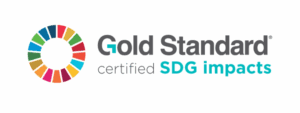
Gold Standard (GS) positions itself as the premium label for SDG co-benefits.
Project Types: Cookstoves, Clean Water, Renewable Energy, Land Use & Forests, Waste Management.
Methodologies: e.g., GS TeV Method for cookstoves, Afforestation/Reforestation for biodiverse plantations.
Fees & Timelines:
– Account opening: Free
– Registration fee: 0.20 USD/t CO₂e (payable at first issuance)
– Annual administration fee: 0.04 USD/t CO₂e
– Typical lead time: 12 months for simple projects; 18-24 months for complex land-use activities.
Strengths: Strong brand among European buyers; explicit SDG impact tracking.
Watch-out: Revenue share per credit can be hefty for high-volume projects.
3. CarbonSink – Global Biochar & EBC C-Sink
Carbon Standards International’s C-Sink family certifies long-term carbon sequestration in biochar and related products.
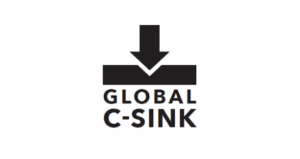
Project Types: Biochar production & application, enhanced rock weathering, other durable sinks.
Methodologies: Global Biochar C-Sink v1.0 (2024), plus European Biochar Certificate (EBC) rules.
Fees & Timelines:
– Audit prep & report: €150 / hour
– Retirement fee: €0.10 – 0.30 per t CO₂e, depending on permanence class.
Typical first issuance: 9-12 months if feedstock traceability is well documented.
Strengths: Rewards long-term storage (>100 yrs), rising demand from tech firms seeking removal credits.
Watch-out: Niche buyer pool; project must pass strict life-cycle analysis on permanence.
4. India’s Carbon Credit Trading Scheme (CCTS) & the ICM Registry
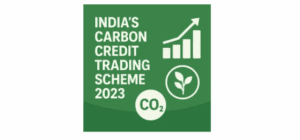
In July 2024 India notified rules for a compliance Carbon Credit Trading Scheme (CCTS) under the Bureau of Energy Efficiency (BEE) and CERC. An electronic Indian Carbon Market (ICM) Registry will issue tradable Carbon Credit Certificates (CCCs).
Project Types (Phase I): Energy efficiency and renewable energy in hard-to-abate sectors.
Planned Phase II: Agriculture, forestry and waste projects once sectoral baselines are set.
Validation & Verification: Must be done by an Accredited Carbon Verification Agency (ACVA)—India-specific equivalent of a VVB.
Fees: Not yet public; draft consultation hints at minimal filing charges and market-based transaction fees.
Strengths: Mandatory demand from Indian corporates once compliance phases kick in; lower forex exposure.
Watch-out: Still evolving; methodologies and trading platform not fully live as of July 2025.
5. Other Emerging or Niche Registries Accepting Indian Projects
| Registry | USP | Typical Indian Use-Case | Notes |
| Global Carbon Council (GCC) | CORSIA-eligible; strong Middle-East buyer base | Renewable energy, waste heat recovery | Updated fee schedule effective Feb 2025 (globalcarboncouncil.com, globalcarboncouncil.com) |
| American Carbon Registry (ACR) | Early mover on soil & rice methodologies | Regenerative ag in north-east India | Credits highly valued in US markets |
| Climate Action Reserve (CAR) | Rigorous North-America protocols | Methane capture from landfills | Few Indian projects so far, but open |
| Plan Vivo | Community-centred forestry | Smallholder agroforestry in tribal belts | Lower fees; heavy focus on livelihoods |
(ACR, CAR, Plan Vivo information from publicly available registry websites and issuance statistics; no paywalled data cited.)
Head-to-Head Comparison
| Registry | Project Types Supported | Methodology Depth | Geographic Focus | Validation & Verification | Indicative Costs | SDG / Co-benefit Tags |
| Verra (VCS) | Forestry, Agriculture, Energy, Waste, Plastic | 100+ approved methodologies; updates quarterly | Global | Accredited VVB + Verra desk review | USD 3 000 reg. + 0.10 USD/t issuance fee; 12-18 mths to first credit | Optional SDG tagging |
| Gold Standard | Energy Access, Land Use, Water, Cities | ~40 methodologies, all SDG-mapped | Global | Gold-Standard-approved VVB + GS secretariat check | 0.20 USD/t reg. + 0.04 USD/t annual; 12-24 mths | Mandatory SDG reporting |
| CarbonSink (C-Sink) | Biochar & long-term sinks | 2 permanence tiers; ISO-based MRV | Global | 3rd-party auditor + Carbon Standards Int. review | €150/h audits + €0.10–0.30 t retirement; 9-12 mths | Durable removal, soil fertility |
| CCTS / ICM Registry | Energy (Phase I), AFOLU (Phase II) | Govt-drafted sectoral baselines | India only | ACVA + BEE oversight | TBD (draft indicates low filing fee); issuance linked to trading cycles | National SDG alignment |
| GCC | Energy, Waste, Blue Carbon | ~30 methodologies; CORSIA eligible | Global (Middle-East focus) | IAF-accredited VVB + GCC QA | USD 1 000 account + issuance fee tiers; 10-14 mths | SDG & Islamic finance lens |
Citations for cost data: Verra, Gold Standard, CarbonSink, GCC tables above.
Practical Checklist Before You Fil
– Clarify Ownership & Title
Land leases, tree usufruct rights and biomass feedstock contracts must align with registry rules on carbon title.
– Document Additionality Early
Capture baseline evidence (satellite, invoices, soil tests) before activities start. Verra and Gold Standard invalidate projects launched prior to listing except under strict “expedited listing” clauses.
– Pick the Right VVB
India hosts <15 VVBs accredited for land-use projects. Early booking can cut validation waits from six months to three.
– Build In Permanence Buffers
Forestry projects typically contribute 10-20 % of credits to a non-tradable buffer. Budget this into your financial model.
– Mitigate Double Counting
If you opt for CCTS later, ensure any voluntary credits are correspondingly adjusted under Article 6 to avoid invalidation.
– Understand Timeline–Cashflow Trade-offs:
Verra: Faster if you choose an “existing methodology” (avoid new methodology development unless budget >USD 100 k).
Gold Standard: Slower, but SDG premium can fetch +USD 2–3/t.
CarbonSink: Quicker crediting (removal projects) but smaller buyer base
– Factor FX and Transaction Costs: Paying USD fees from an INR account? Lock FX rates or use multi-currency wallets; even 2 % fluctuations can wipe margins.
– Align with CSR & ESG Goals: Corporates funding your project may prioritise SDG co-benefits (education, gender). Registries differ in how well they document these impacts.
Conclusion & Next Steps:
– Registering a carbon project in India is no longer a one-size-fits-all decision.
– Verra delivers scale and liquidity—ideal for large agroforestry or renewable portfolios seeking international buyers.
– Gold Standard suits community-centric cookstove or water projects chasing premium SDG pricing.
– CarbonSink is the specialist route for durable removal credits such as biochar.
– CCTS / ICM will soon be unavoidable for compliance-driven domestic demand, offering a home-market hedge against FX risk.
Before choosing, map your project’s size, credit vintage, co-benefit story and buyer profile. And remember: the cheapest registry fee isn’t always the lowest total cost once timelines, buffers and marketing premiums are factored in.
Need a Consultation or Implementation Partner for your Carbon Project in India Connect with us at sales@anaxee-wp-aug25-wordpress.dock.anaxee.com
